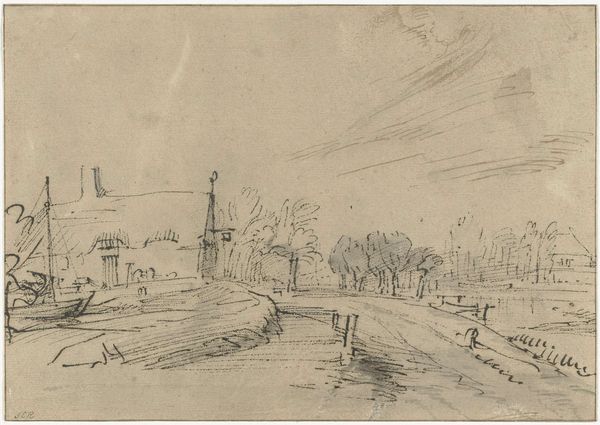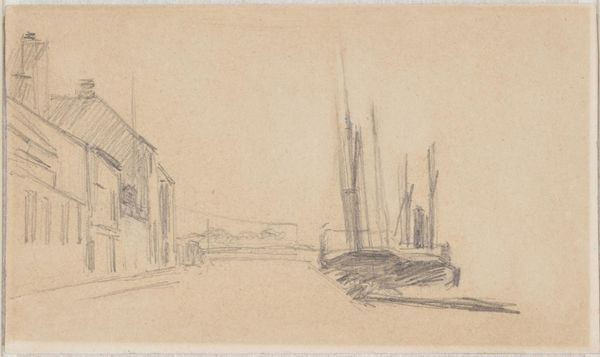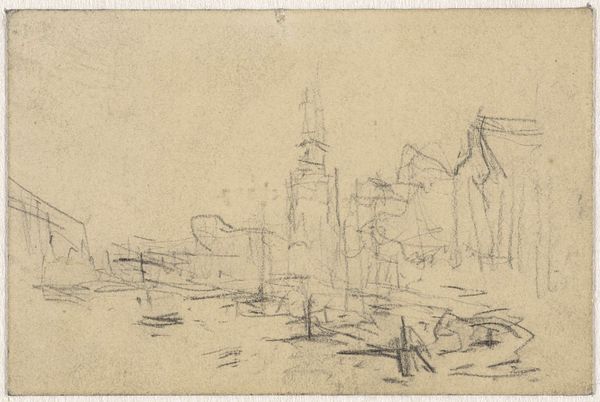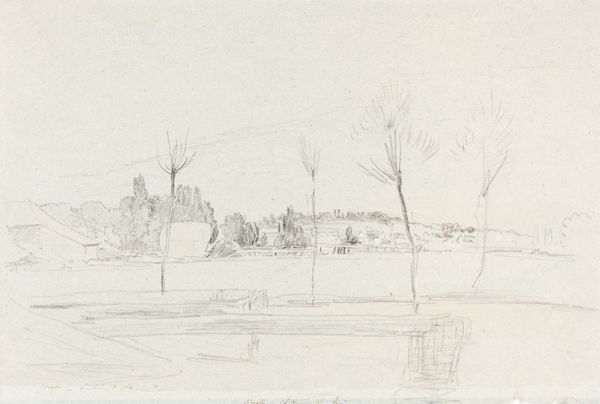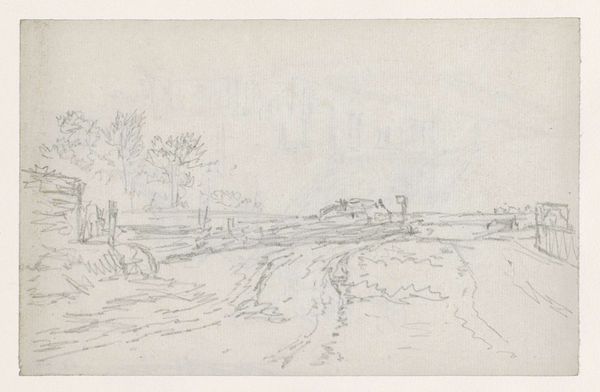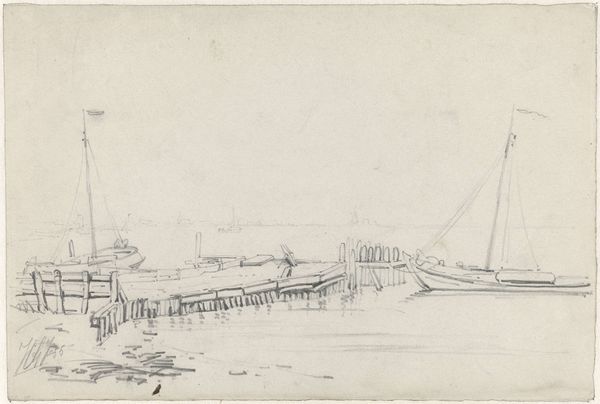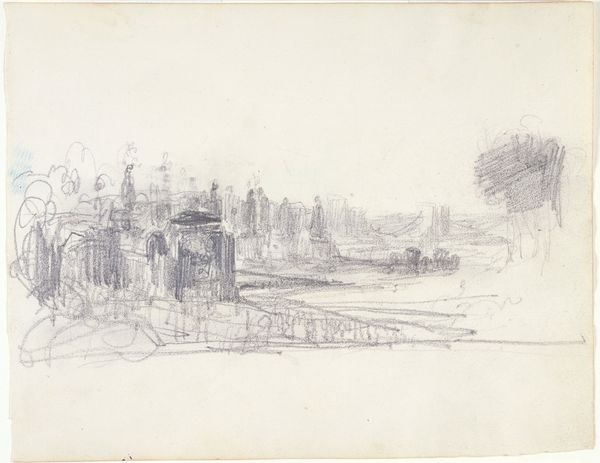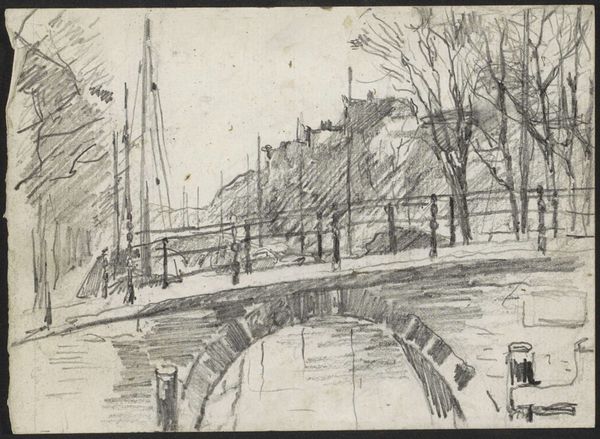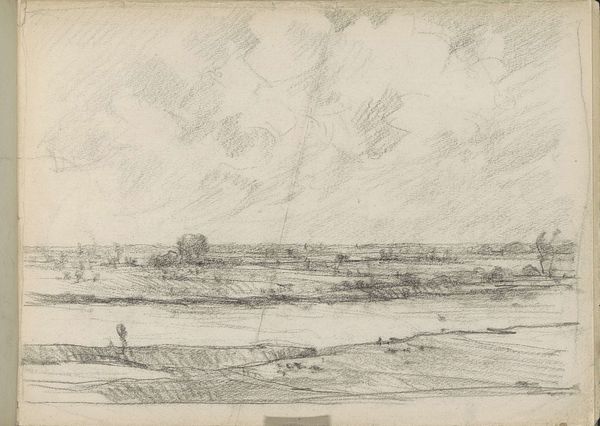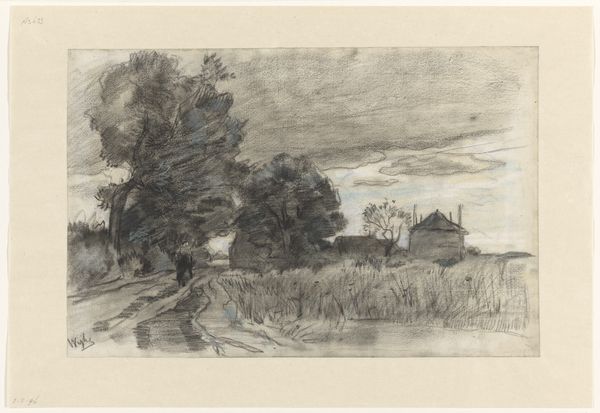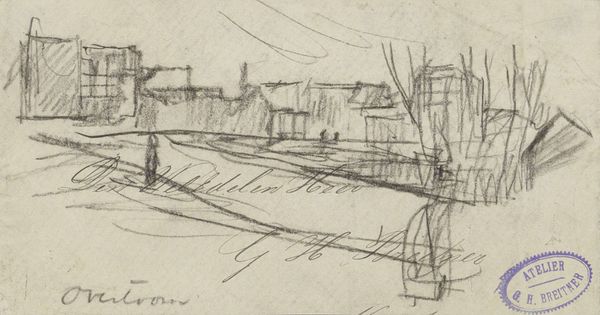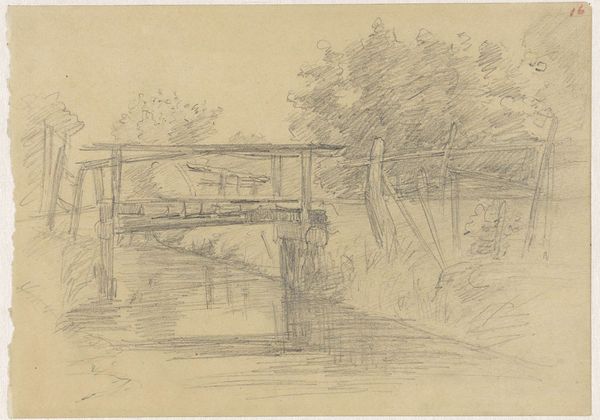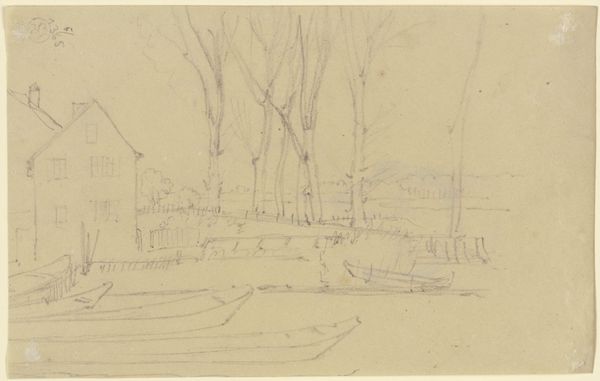
drawing, pencil
#
drawing
#
impressionism
#
landscape
#
pencil
#
cityscape
Dimensions: 112 mm (height) x 187 mm (width) (bladmaal)
Curator: Let's talk about "Kronborg set fra vest," or "Kronborg Seen from the West," a pencil drawing created sometime between 1866 and 1906 by Albert Gottschalk. It is currently held in the collection of the SMK, the National Gallery of Denmark. Editor: My first impression is a sort of serene incompleteness. The delicate pencil strokes create a hazy, almost dreamlike image of the castle. There's an immediate sense of stillness. Curator: I see that too. Gottschalk, though painting primarily in a time dominated by academic styles, aligned with Impressionist tendencies—emphasizing atmosphere over strict representational accuracy. Look at how he captures the light on the water with just a few deft strokes. This aligns with the shifting social emphasis on the individual experience during the late 19th century, right? Editor: Absolutely. I'm particularly struck by the contrast between the solidity of Kronborg Castle and the ephemeral quality of the water and sky. The castle has obvious associations with power and control, whereas the atmospheric conditions have more elusive connotations. It really invites a conversation about the nature of enduring power versus the forces that diminish and weather any imposition. Curator: Precisely. Kronborg was not only a strategic fortification, but a symbolic representation of Danish national identity. Gottschalk reduces that formidable architecture to something almost vulnerable here. I find that quite interesting. Editor: I agree. It's a kind of deconstruction, then, almost resisting the expected monumental portrayal of a symbol deeply intertwined with the military and economic interests of Denmark, historically speaking. Curator: Yes, and consider also who would be moved to create a subtle landscape drawing in that specific time and place. Understanding this is to bring Gottschalk and the artistic milieu he participated into conversation. Editor: It invites reflection on themes of transience and perhaps, even the limits of national identity in a world that was rapidly becoming more connected. It makes the viewer reconsider preconceived notions of what landmarks of state and power symbolize in a new light. Curator: Indeed. Gottschalk compels us to contemplate not just what we see, but also how we see it. Editor: This small sketch offers a glimpse into a moment of quiet contemplation. Thank you for shedding light on the bigger ideas that can be derived from what may, at first glance, seem unassuming.
Comments
No comments
Be the first to comment and join the conversation on the ultimate creative platform.
